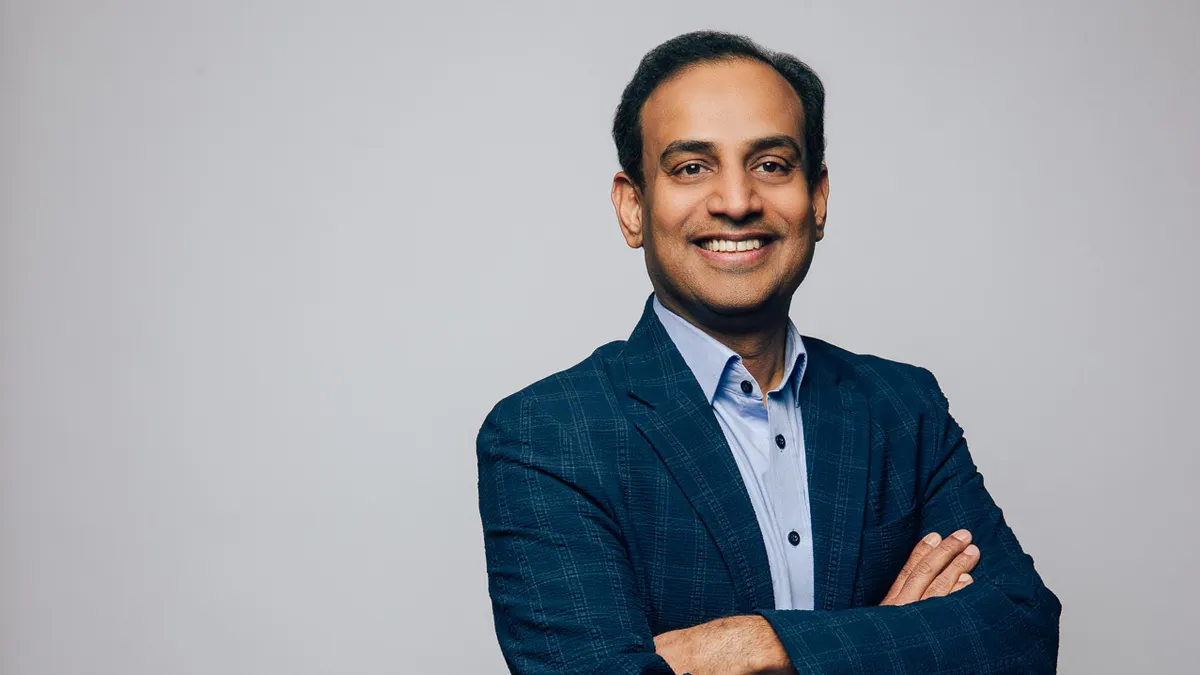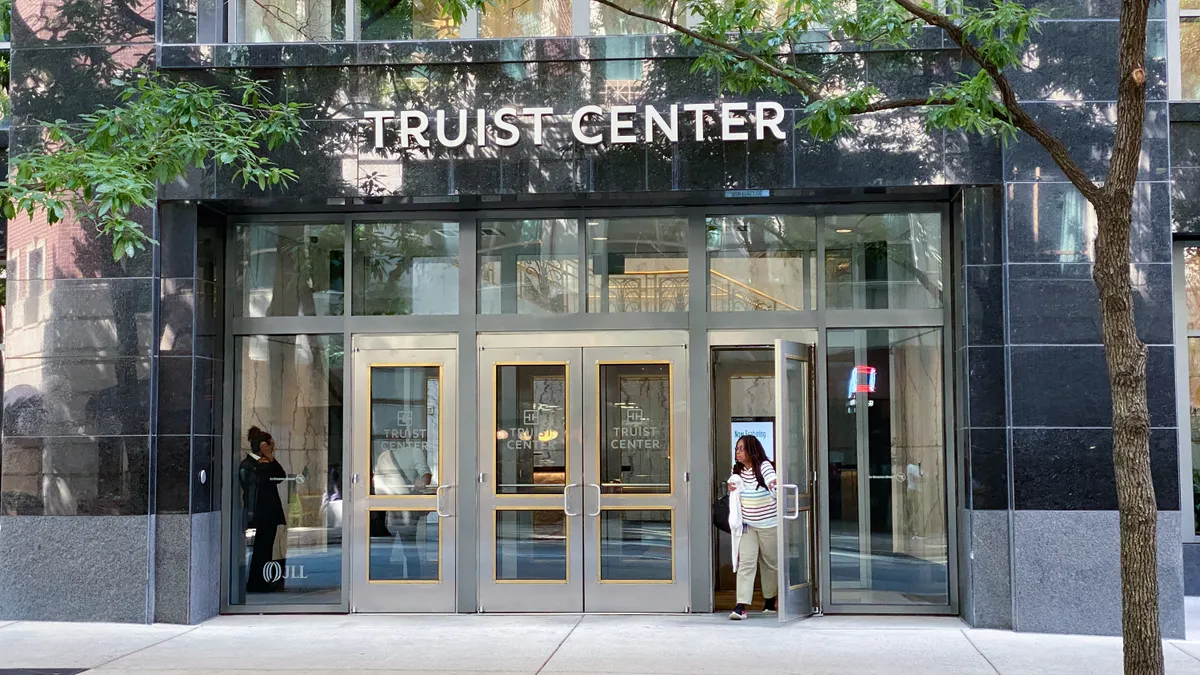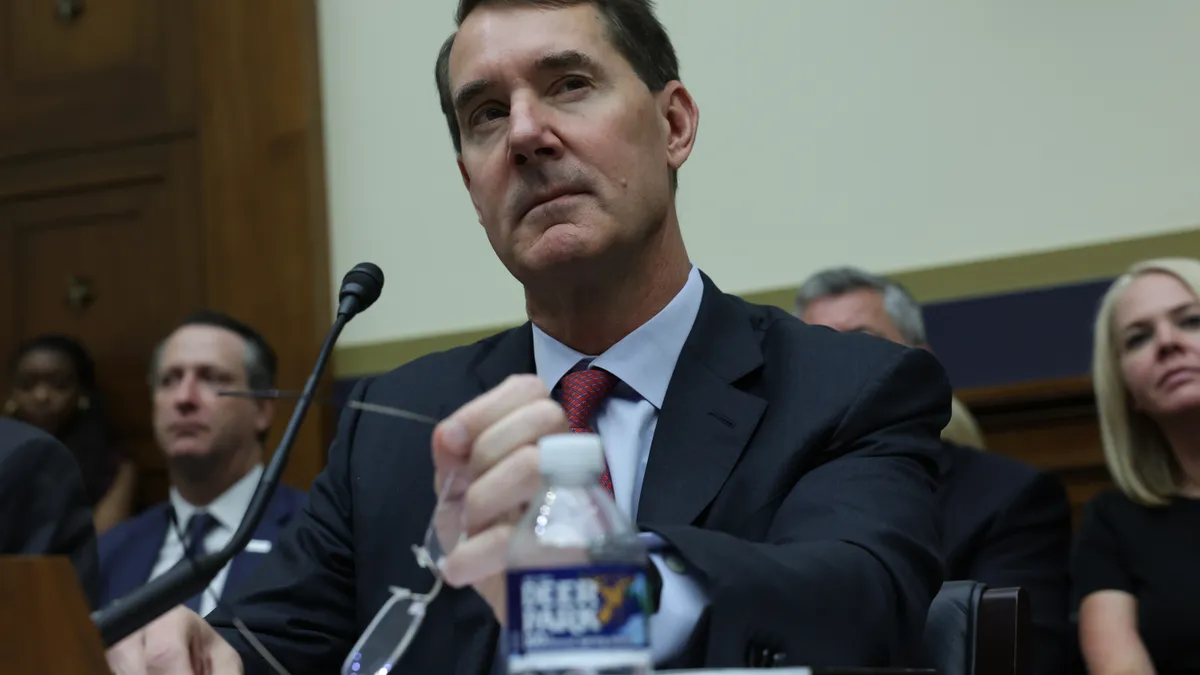Since the July rollout of Ally’s proprietary artificial intelligence platform, the breadth of use is what’s surprised Sathish Muthukrishnan, the bank’s chief information, data and digital officer.
“We have people in the sales force that are using it, people in the operations side, customer care associates using it; obviously, folks in the technology side; marketing; our risk control partners, risk compliance; audit, privacy – they're all big users of it,” said Muthukrishnan, who’s been in his role at the digital bank since 2019.
The Detroit-based lender gave its 10,000 employees access to Ally.ai two months ago, after testing it with a smaller group for more than a year. About 400,000 prompts have been submitted to the platform, and adoption is at about 50%.
The bank wants employees to use the platform, which was built in-house, to handle tasks such as drafting emails and proofreading copy, to free up their time for other projects.
When asked how AI might affect the company’s headcount, Muthukrishnan said it’s set to “have a meaningful impact on the business outcomes.”
Ally has “ambitious” growth plans, so for the company to generate more revenue while maintaining current spending levels, “technology and AI become critical,” Muthukrishnan said in a recent interview with Banking Dive. “That's both driving efficiency and effectiveness. It's not just efficiency of cost; it's efficiency of speed.”
Editor’s note: This interview has been edited for clarity and brevity.
BANKING DIVE: Where does Ally go from here with AI?
SATHISH MUTHUKRISHNAN: Since the launch, there is tremendous demand and a lot of use cases coming our way. Now, let's turn the tables and see how we can identify use cases that are harder to solve on the business side, and how do we bring that to the forefront?
With the pace at which technology is evolving, something that seems impossible, something that seems super hard to solve right now, we will be able to solve in a few months. So we want to tackle those hard problems now, and we want to do it collectively across the organization.
Our CEO has asked me to come and educate the entire executive committee on how we are advancing in AI, and we're going to call it an executive committee AI day, and it's just purely to set aside dedicated time, bring us all together, fully focused on AI. These are all busy people running big organizations, so there's a little bit of pressure on making sure that I use their time efficiently. But we're going to talk about what are the things that we can collectively solve for the company. We have thoughtfully rolled out AI, and there is interest across the company, but we need to bring the company along.
How has Ally’s AI governance approach evolved since implementation?
It might sound like a cliche, but we focus on doing simple things savagely well. Things that are simple – having risk controls, having data protection, having access controls – can be cast aside because you see the shinier object.
For us, to have an AI working group, then having an AI governance steering council, then having an enterprise-level committee, then the board – having this many levels of governance to ensure that AI is scaled safely and responsibly is super critical. We did the hard work ahead of time, we have exercised this governance muscle extremely well, and people have gotten used to it.
How do you see the role of AI agents evolving at Ally in the coming years?
Agentic AI allows you to look at the complicated paths, complicated processes, and allows you to digitize that. It’s still in an experimental stage for us.
For example, all applications in our tech ecosystem have observability. If there is an issue, we want to be the first to find out, before the customer finds out, or our business partner finds out. So a ton of alerts come our way. If I have to process those alerts, but not increase my headcount as I'm increasing the number of customers, I'm looking at agentic AI to do that. The usage of digital has doubled in the last four years by our customers, but the cost of serving them has gone down. That's because of the introduction of new technology.
If you want somebody to reset your password, that could be agentic AI that does that internally. Those are some of the experiments that we are doing; nothing that is in production or at scale yet.
What are your biggest concerns, as the bank’s tech chief?
No. 1 is cyber. It’s top of mind. Not just because of what is happening today, but how easy it is for cyber criminals to get access to technology and create more sophisticated cyber attacks. But as a regulated institution, you have to watch how technology is being adopted.
No. 2 is the pace at which the technology is changing. It weighs on me, because it's a constant learning process for the organization, on top of delivering at pace. So your learning agility and your execution agility always has to be, like, in the fifth gear, and that's hard. And these cyber events are like sharp turns or speed bumps on the road while you're running a marathon at sprint speed.
And No. 3 is, how do you educate and bring the organization along? Technology or AI is not here to replace anybody; it is to make sure that you take away the mundane part of the job and make them even more effective, so they can serve our customers better. So how do you do that, how do you bring everybody along? And that is a patience game. But at the same time, the speed at which the technology is changing, you can’t be patient. So it's a partnership with them, to bring them along.
How do you think about the future of your role?
Today, everybody can be a CIO because of ChatGPT. You would walk into a room and you felt like you had knowledge that nobody else did. But as you're talking, people can be on their phone verifying your answer or getting a better answer, because ChatGPT is the better CIO, whether we like it or not.
On the other hand, thinking about the art of the possible, using technology as a tool to re-underwrite, re-imagine your business and asking the difficult questions of, are you serving your purpose? Are you serving your customers right? Do you have the right talent and capabilities to serve the customers? Can you do it differently? Can you do it faster? Can you do it with better technology? Can you enhance the user experience?
It’s up to the technology leader to figure out, where do you want to be? Do you want to be in a defensive mode, or do you want to be in an offensive mode, partnering with business leaders and figuring out, what is the next version of the product going to be?






















